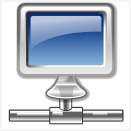Let’s face it – the Mac is an awesome machine. Somewhere along the line, however, Apple decided that it was SO awesome that upgrades weren’t that important. For many years, especially in Apple’s early history, expandability of hardware was a touchy issue for Mac users. As Andy Hertzfeld (and isn’t it every geek’s dream to have “hertz” in their last name?) notes in a folklore.org entry, Steve Jobs and other Macintosh pioneers thought that hardware upgradablity was “a bug instead of a feature.”
It was for this reason, among others, that Macs never quite caught on with the gaming/overclocking community as did PCs. Granted, there were many who overclocked their Apple computers or modded them to fit their needs, but the large group (like myself) who enjoyed swapping out cards and upgrading components were left out in the (liquid cooling system equipped) cold.
All of that may be changing with the new Macs. Maybe. We’ve seen several things in the past few days which point to a change of heart in Cupertino. One article tells the ease with which users are able to upgrade their ram (as opposed to previous iMacs), while another at Accelerate Your Mac tells of intrepid Japanese users who successfully upgraded their Core Duo CPUs.
I can tell that at this point you are underwhelmed, as well you should be. PC users have been upgrading processors for eons… or at least the past 15-20 years. The significance here is that Apple has, in the case of the RAM, gone out of its way to ensure that users can quickly and easily upgrade components. This is a seismic paradigm shift from previous Apple eras and causes us to wonder if Apple has had a change of heart with the move to Intel processors.
Will Apple take this opportunity to attract the mod/gaming/overclocking/leet crowd who are more than content to spend their Friday nights swapping out graphics cards (hey, who you lookin’ at?)? Let’s hope so.
Liberty for Mac components is a winning move for all users, since it means wider adoption and higher production of third-party products. Meanwhile, if you need me, I’ll be building my (imaginary) custom iMac at the Apple website… and hunting down a few upgrades to go along with it.







Recommended Comments